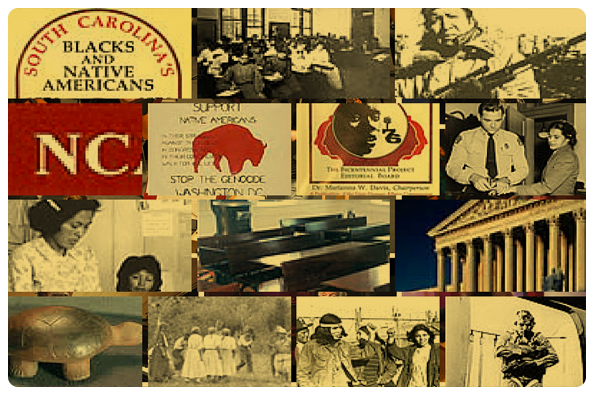
Native American Civil Rights History Timeline
1896-1978
- 1800s
-
1896Plessy v. Ferguson

The Supreme Court decision of Plessy v. Ferguson began its long "Jim Crow" career of "separate-but-equal" in South Carolina which perpetuated segregation even for Native American Indian communities and the notion that Native American Indians were second class citizens.
National Event - 1920s
-
1924Right to Vote

In 1924 that the federal government officially classified American Indians as "citizens" and were given the right to vote in National elections. This was done after Native American Indian had already fought in three wars for the United States of America.
National Event - 1930s
-
1934Indian Reorganization Act

US Congress passed the Indian Reorganization Act. This new policy sought to protect American Indians from loss of their lands and provided funds for economic development. It also helped reestablish tribal governments.
National Event - 1940s
-
1943-44Desegregation and Native Americans

There were nineteen elementary schools classified “Special Schools” serving these Indian communities. These were segregated American Indian Schools serving various Native American Indian communities throughout the state including: the Cross Roads School of Westminister, SC serving Cherokee community in upstate, The Sardis Indian School,The Summerville Indian School, The Varnertown Indian School, and the Catawba Indian School.
South Carolina Event -
1944NCAI Founded

About 100 Indian people met to create the nation’s first large-scale national organization, the National Congress of American Indians (NCAI) . This organization was designed to monitor federal policies. Today, over 250 member tribes work to secure the rights and benefits to which they are entitled; to enlighten the public toward the better understanding of Indian people; to preserve rights under Indian treaties or agreements with the United States; and to promote the common welfare of the American Indians and Alaska Natives.
National Event -
1945Catawba Indians

During the 1950s, more than 100 tribes were legally terminated, land assets were lost, thousands of Indians were relocated by the Federal programs to the culture shock of the urban slums and tribal governments were generally weakened. It was during this time that the Catawba Indians of South Carolina were terminated as a federal Indian Tribe.
The Catawbas had been recognized by Congress in 1848 and 1854, yet they were looked upon as a “State Indian Tribe.” This decision was not rescinded until recently when they won a land claim and once again became a Federal Tribe with Treaty status. They had fought this land claim since 1904.
South Carolina Event - 1960s
- 1961NIYC Founded

Youth activism continued to rise around the country. The National Indian Youth Council (NIYC) organization was formed to resurrect a sense of national pride among young Native Americans and to instill an activist message.
National Event - 1968The American Indian Movement (AIM)

The American Indian Movement (AIM) was primarily urban Indians who believed that direct and militant confrontation with the US government was the only way to redress historical grievances and to gain contemporary civil rights. This group believed the tribal governments organized under the IRA (1934) were not truly legitimate or grounded in traditional Indian ways.
National Event - 1970s
- 1972NIYC Founded

The Indian Education Act authorized funding for special bilingual and bicultural programs, culturally relevant teaching materials,and appropriate training and hiring of counselors. It also created an Office of Indian Education in the US Department of Education.
Today the mission of the Office of Indian Education is to support the efforts of local educational agencies, Indian tribes and organizations, postsecondary institutions, and other entities to meet the unique educational and culturally related academic needs of American Indians and Alaska Natives so that these students can achieve to the same challenging state standards as all students.
National Event - 1973Wounded Knee

After a violent confrontation in 1972, tribal President Richard Wilson condemned AIM and banned it from the reservation. In February 1973, AIM leaders and about 200 activists took over the village of Wounded Knee, announced the creation of the Oglala Sioux Nation, declared themselves independent from the US. The siege lasted 71 days, during which time federal marshals, FBI agents, and armored vehicles surrounded the village. AIM members agreed to end their occupation under one condition: that the federal government convene a full investigation into their demands and grievances.
National Event - 1976Blacks and Native Americans

The South Carolina's Blacks and Native Americans 1776-1976, Bicentennial Project explored issues surrounding these communities and published the findings in a book. This was produced by the State Human Affairs Commission and was chaired by Dr. Marianna W. Davis.
South Carolina Event - 1976The Longest Walk

The Longest Walk was major national protest event that began in San Francisco where a group of American Indians set out for Washington, DC, to symbolize the forced removal of Indians from their ancestral homes. They also wanted draw attention to the growing governmental and public backlash against efforts to protect Indian treaty rights and Native Peoples.
National Event
